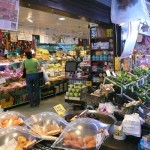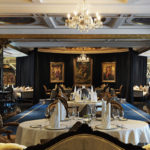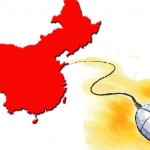Open a Coffee Shop in China
 China has a dazzling economic growth. Coffee is a ubiquitous consumer goods and a prominent culture heritage of the developed countries. It is a natural mind process to perceive China as the next major coffee market. This perception is so strong that creates an abyssal disproportion between high investment in coffee market and low capital return from the investment. Domestic coffee business is hit the hardest, but many of foreign companies also fall victim. There are going to be unique challenges to doing business anywhere, but the challenges of opening a Coffee Shop in China are unique than most. One of the biggest challenges is that most Chinese people don’t like the taste of coffee.
China has a dazzling economic growth. Coffee is a ubiquitous consumer goods and a prominent culture heritage of the developed countries. It is a natural mind process to perceive China as the next major coffee market. This perception is so strong that creates an abyssal disproportion between high investment in coffee market and low capital return from the investment. Domestic coffee business is hit the hardest, but many of foreign companies also fall victim. There are going to be unique challenges to doing business anywhere, but the challenges of opening a Coffee Shop in China are unique than most. One of the biggest challenges is that most Chinese people don’t like the taste of coffee.
So what does it take to start a coffee shop in China?
1. Vision:
A one-dimensional piecemeal approach can hardly work. One needs be able to envision a full scale of business strategy fulfilled with vivid consumers and products. It has already been the third decade since coffee house business started its momentum in China. There are enough lessons and insights about the market to construct some realistic and daring business concepts.
As one of the poorest countries, China is also one of the top three luxury markets in the world. When the market is crazy, one needs to humbly stick to market fundamentals especially for a general consumer goods. A grass root business strategy is the only way to popularize coffee and the only chance to grow this market.
2. To Whom:
 Although coffee is not a mainstream drink, it has an unbeatable image known to almost everyone, which is the best marketing tool and conceptual image for a quick service restaurant (QSR) concept. 85oC is the most popular bakery chain which has stormed China’s market in the past several years. Its main categories are bakery goods. Nonetheless, it names its bakery after the best temperature for a good cup of coffee, 85oC.
Although coffee is not a mainstream drink, it has an unbeatable image known to almost everyone, which is the best marketing tool and conceptual image for a quick service restaurant (QSR) concept. 85oC is the most popular bakery chain which has stormed China’s market in the past several years. Its main categories are bakery goods. Nonetheless, it names its bakery after the best temperature for a good cup of coffee, 85oC.
Think hard on who your consumers are, how to segment them geographically and demographically, what and why they would buy, how much they can afford, and what distinguish your business from others.
3. Sell What:
Average coffee shop sells 15 cups of coffee per day. Coffee alone will not make this coffee business fly. It requires designing a matrix of the foods and beverages to offer to the consumers.
Thus, one has to consider food seriously as a major part of offering in a coffeehouse business. Coffee provides higher profit margin but food can attract consumers. Alice Foote MacDougall is an important figure in America’s early coffee business. She made her name in coffee roasting for 20 some years, but really made her fortune to start an early coffee shop chain. Her first breakthrough was to open a tiny twelve-by-sixteen-foot space in Grand Central Station in NYC when she sold waffle alone with coffee. She expanded the food section to be a full meal restaurant eventually. In her glorious days, she had 6 coffee houses serving six thousand people per day with a two millions gross revenues in 1920’s. Interesting enough, she has an aversion to food.
4. At What Price:
Coffee and coffee house business cannot be detached from the rest of the restaurant and consumer goods industries as happened in China now. It has to identify the referential consumer products in the market in order to make coffee comparable in price and in turn conceivable as an alternative drink to the subconscious mind of the consumers. In the developed coffee countries, coffee, tea, spring water, Coca Cola and all these mainstream beverages have comparable price. McDonald, Starbucks, Dunkin n’ Donuts, and 7-Eleven all have similar coffee price more or less.
It is important on how to price a line of your products to attract most of targeted consumers and to maximize your profit through coffee products. As a matter of fact, a cup of 12oz fresh coffee costs less than a bottle of 16 oz Coca Cola when that same cup of coffee sells five times higher than that bottle of Coca.
5. At Where:
The current coffee shop model renders coffee market has to open at the locations where have the densest foreign population and the highest average income, which means it also has the highest rental rate in China’s world-class high rental rate market. It is one of the key causes why so many coffee shops failed in their first half year.
Obviously it is not a complete list, but it’s a start.









![[Podcast] China paradigm #16: How an APP can improve employee training in China](../wp-content/uploads/2019/03/China-business-podcast-16-training-in-China-150x150.jpg)




